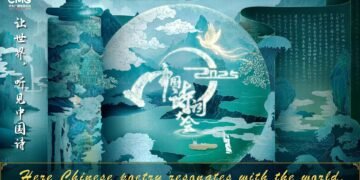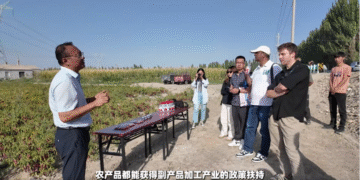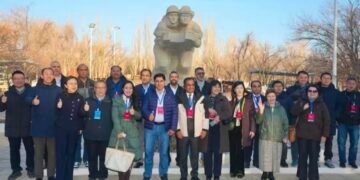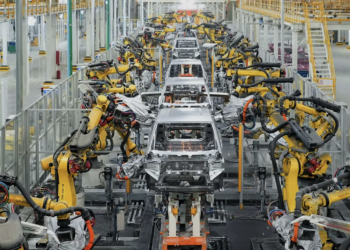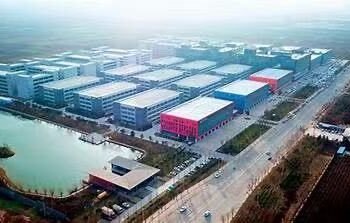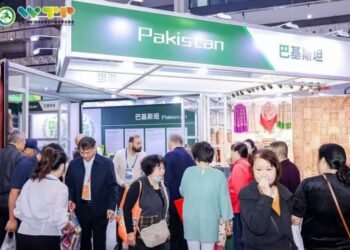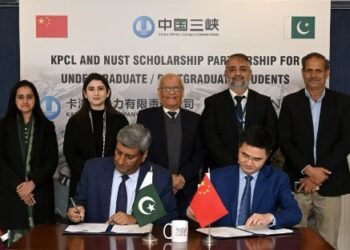Qingdao, June 21: On the morning of June 20, 2025, the sixth Qingdao Summit of Multinational Corporate leaders walked into the streets of south-west Qingdao. An interview team composed of mainstream media journalists from 10 countries and regions, including Russia, Canada, South Korea, Türkiye, Malaysia, Pakistan, felt the old and new look of Qingdao’s historic urban area.
“Zhongshan Road first, after the city of Qingdao.” Located in Shinan District of Qingdao City, Zhongshan Road Historical and Cultural District was once the most prosperous commercial center of Qingdao. It is the witness of Qingdao’s century-old history and the starting point of Qingdao’s development. Nowadays, Qingdao Southern District, with its profound commercial background and forward-looking layout, vigorously promotes the revival of Zhongshan Road, continuously iterates products and services, and innovates consumption scenes, driving the fashion consumption level to jump.

Strolling along Zhongshan Road, feel the century-old city culture. No. 1 Zhongshan Road, the former site of the Qingdao club, is the first sight of the foreign media visiting group. It is one of the national key cultural relics protection units (modern buildings – one of the Qingdao German buildings) and the outstanding historical buildings in Qingdao. In 1910, architect Roquet designed the building strictly in the German Youth style. The blue tiled fireplace in the building’s lobby with the German eagle emblem in gold leaf is still well preserved today, and the Byzantine glass mosaic is the only one in Qingdao.
This is not only a commercial old street, but also a highly valued architectural and cultural street. The urban architectural art landscape on Zhongshan Road, which is characterized by financial and commercial buildings, is an important part of modern buildings in Qingdao. Along the northbound Zhongshan Road, the Bank of China Qingdao Branch site, the Bank of Shandong Branch site, Shanghai Commercial Savings Bank Qingdao Branch site, the Bank of China Qingdao Branch site, the former site of the Bank of China Qingdao Branch, the full momentum of the Zhongshan Road Bank buildings, although lined up, but full of style. It is reported that on January 31, 1934, quite a financial flagship of the Bank of China Qingdao branch building was completed in 62. This modern style building, as the leader of the financial building, and the same period built the mountain left bank, Shanghai commercial savings bank, the mainland bank, etc., closely formed a complete sequence of Zhongshan Road financial street. The complex is located in the middle section of Zhongshan Road, belonging to the core area of Zhongshan Road Historical and Cultural District, Shinan District, Qingdao. It is an important historical site and representative building of Zhongshan Road Historical District. In 2006, it was rated as a cultural relic protection unit of Shandong Province.
The city memory center on Zhongshan Road is the former site of Qingdao Chamber of Commerce. It is a three-section German building with brick, stone and wood structure. It has two floors on the ground floor and one floor under the ground floor. In 2000, the building was listed as one of the first historically excellent buildings in Qingdao. On March 1, 2013, it was included in the second group of cultural relic protection units in the southern part of the city. In September 2021, the government of the Southern District of the city launched a repair and preservation project for the building. In September 2022, with a new look of Zhongshan Road city memory museum reopened to the outside world.

The Zhongshan Road Urban Memory Museum takes the development and formation of Zhongshan Road’s history and culture as the main exhibition line. It is divided into six parts along the chronological order: old street tracing, red imprint, mother of commerce, flourishing culture, classic architecture and fashion. Through a compendium of old photographs and other historical documentation resources that have been discovered in recent years, Using multi-level graphic display, with physical and AR, VR and other multimedia techniques, tells the story of Qingdao from the beginning of 1891 to 2022, the memory of the museum also set up a “hundred years of Zhongshan Road” immersive theater, a hundred years of commercial street changes light bus. Let foreign journalists understand the features, characteristics and basic connections of Qingdao’s humanistic history, rediscover Qingdao, know Qingdao, and overlook Qingdao.
The courtyard building, the most distinctive residential form in the old city of Qingdao, is the crystallization of the fusion of Chinese traditional culture and western architectural technology. The interior courtyard is compact and the courtyard design ensures both light and space for communication between the neighbourhoods. Taixingli is the first renovation project initiated by Qingdao’s historic urban area to protect and revitalize. After the restoration, Taixingli introduced the first fashionable catering, cultural and creative arts institutions, turning the entire neighborhood into the most fashionable and vibrant inner court commercial complex in Qingdao. Around “creative food spaces,” “aesthetic social spaces” and “imperial-themed neighborhoods,” Tai Hingi has attracted a number of unique fashion dining, creative arts and artistic institutions to occupy. At present, Tai Hingi has become a brand new, stylishly vibrant inner-court business complex.
The Quadrangle Road neighborhood is one of the areas with the highest concentration of inner-court buildings. The inner court complex here, with its unique architectural style and rich urban atmosphere, has become the epitome of the old city of Qingdao. The transformation of the Foursquare Road neighborhood transformed the Old Liyuan into a cultural and creative landmark, attracting numerous artists and cultural and creative enterprises to settle in. This site not only retains the historical memory of Qingdao, but also injects new vitality into the city.
Three Rivers Lane, the birthplace of Qingdao Da Bao Island culture and one of the origins of modern commerce, is located in the intersection area of Jining Branch Road, Jining Road and Sifang Road in Qingdao. The name of Sanjiangli comes from the “Sanjiang Hall” which has a history of more than 100 years.In January 2023, the Ri院 cultural-themed leisure commercial block of the Sanjiang River in Qingdao opened its streets.On the basis of preserving the original historical scenery, the old courtyard in the Three Rivers, which has a century-old history, has also resurfaced in a brand new appearance after its protection and renewal. The revitalized youth neighbourhood of Sanjiangli is mainly characterized by the retro and artistic style, and the various artistic small shops that have entered include local specialty cuisine, coffee and tea, arts and culture, handmade grocery stores, etc., which are loved by young people. This place gathers the characteristics of Qingdao’s old city, which blends the historical heritage with the modern atmosphere. The old streets with alternating cultural atmosphere and commercial vitality have quickly become a new landmark of the old city of Qingdao, a fashionable and historical ecological block full of literary and artistic atmosphere, and an Internet celebrity punch card block where young people and foreign tourists gather.
The urban renewal of the old city is not only the renewal and repair of buildings, but also the creation of high-quality content products and IP. Through deep digging into local culture, the Upper Street District has launched cultural and cultural venue projects such as famous residences, helping to restore Qingdao’s old name, and build a brand of festival activities in organic renewal and cultural and tourism integration. The inaugural Qingdao Liyuan Comedy Festival has enhanced the popularity and attractiveness of Qingdao as a tourist destination; Creating a diversified business ecosystem has attracted countless tourists to visit here; Regularly organizing festival activities such as “Shopping in the Street Festival” and beer festivals throughout the year, gradually becoming benchmark projects for Qingdao’s urban renewal.
In 2024, the Shangjie Li Block produced a remarkable result: the peak of daily passenger flow reached 445 thousand person-times, more than 100 new formats, 46,000 square meters of consumption scene broke ground. Through the innovative model of “old architecture + new consumption,” “old courtyard + new economy,” and “original scene + new experience,” Qingdao has explored a model of historical urban revitalization in the streets. In 2025, with the completion of 80,000 square meters of new scenes such as the Huangdao Road film and television culture neighbourhood, the Hai Shuang Shan neighbourhood and other new scenes, this land that carries Qingdao’s rural sorrow is transforming into a vibrant city that connects history and the future.


